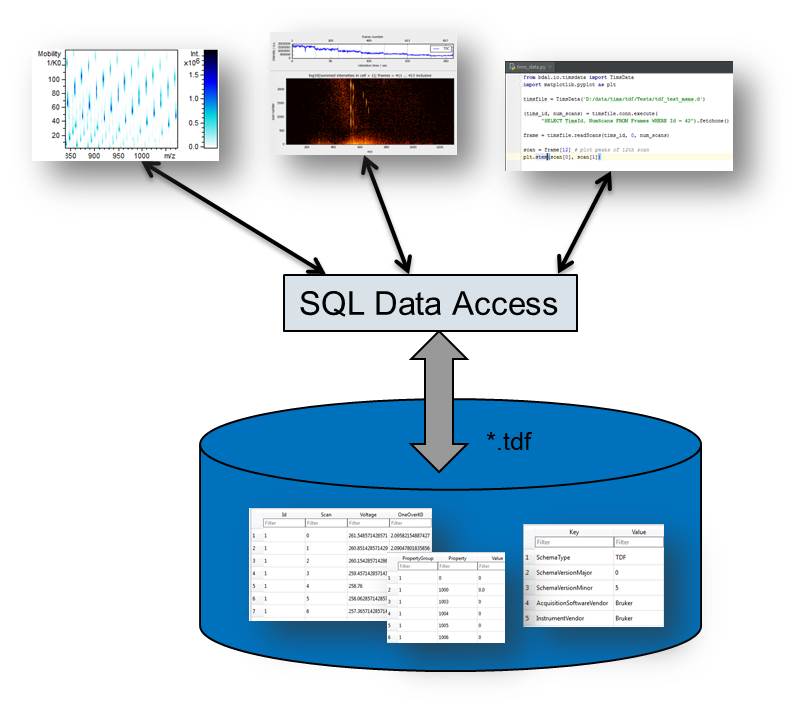Trapped Ion Mobility Spectrometry (TIMS) leverages the drag of an electrical field in the TIMS tunnel, while a gas flow is pushing ions forward. At the position where these opposing forces balance out for an individual ion, it is held in place according to the charge state and collisional cross sections (CCS). The larger the collisional cross section of an ion, the stronger the force that it experiences from the gas flow. When ramping down the electrical field ions are selectively released and thus separated according to size and shape.
Dive into the details of TIMSimeX Technology allows adjusting the ion mobility resolution of timsTOF during data acquisition. In imeX survey mode, ions along the full mass range are analyzed to generate an overview spectrum that is resolved by ion mobility. Use the different imeX modes to magnify a specific mobility range for more accurate analysis of collisional cross sections or resolve overlapping ions with ultra-high mobility resolution, respectively.
Ion mobility separation and the controlled release of ions from the TIMS tunnel occur in the second section of the TIMS analyzer. This process requires time (microseconds) during which no further ions can be collected in this section of the TIMS tunnel. With parallel accumulation, new ions are not discarded but instead collected in the first section of the TIMS analyzer, minimizing loss of analytes. Once the second section is free, the collected ions advance and undergo separation. Parallel accumulation maximizes the instrument duty cycle to close to 100%.
In timsTOF, ion mobility separation takes place at the beginning of the ion path. Only then, the separated ions enter the quadrupole for precursor isolation. As a result, precursor ions for fragmentation have undergone selection by both ion mobility and the quadrupole, which generates very clean MS/MS spectra. Furthermore, this geometry ensures that MS and MS/MS information remains correlated and are accurately assigned in displayed heatmaps.
timsTOF introduces the novel TIMS Data Format (*.tdf) using the open source SQLite technology. The standardized SQL data access provides an efficient and flexible way to retrieve all relevant information and therefore greatly enhances transparency of data analysis and processing with unparalleled performance. Hence, the approach enables you to create software tools tailored to your specific research questions.
